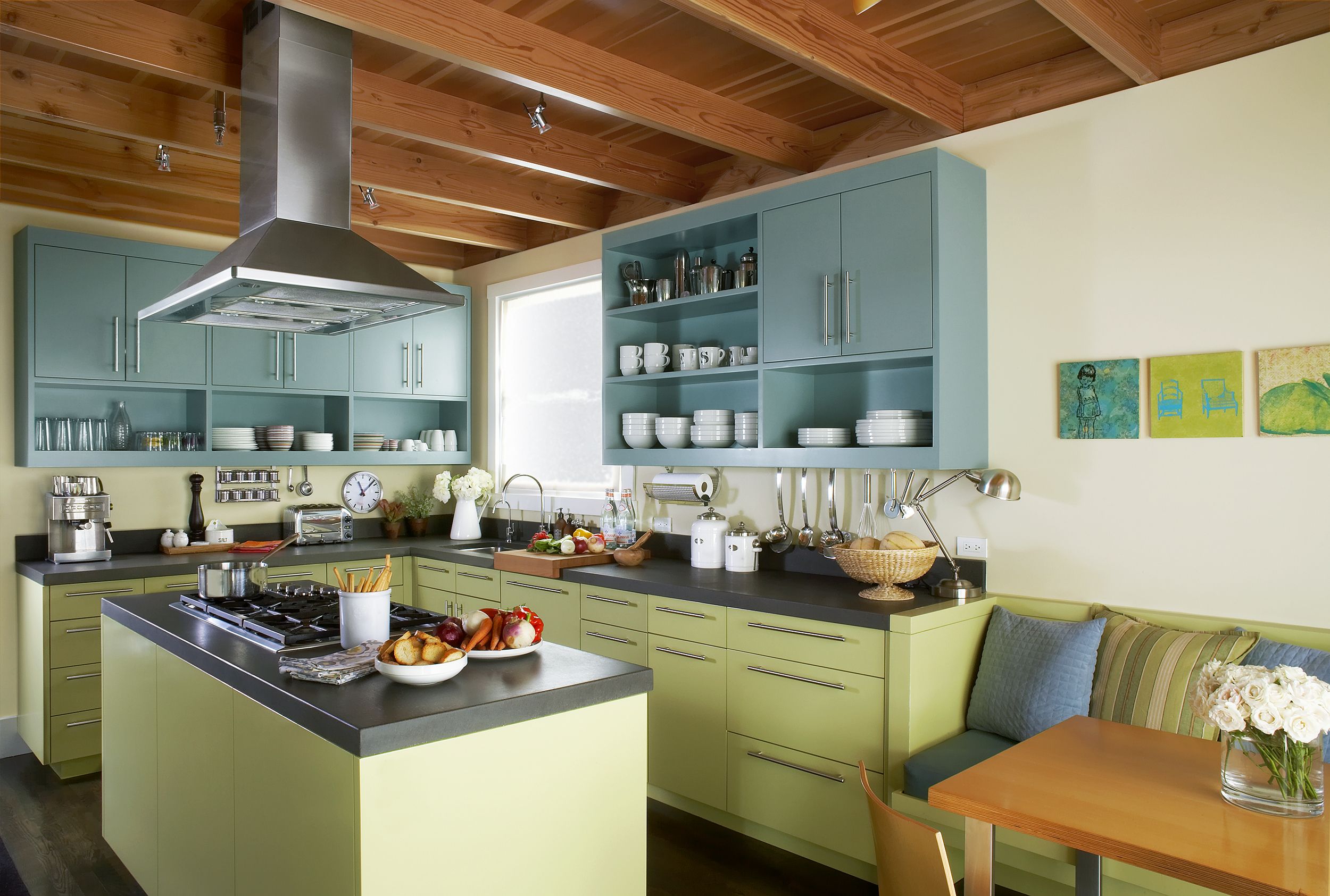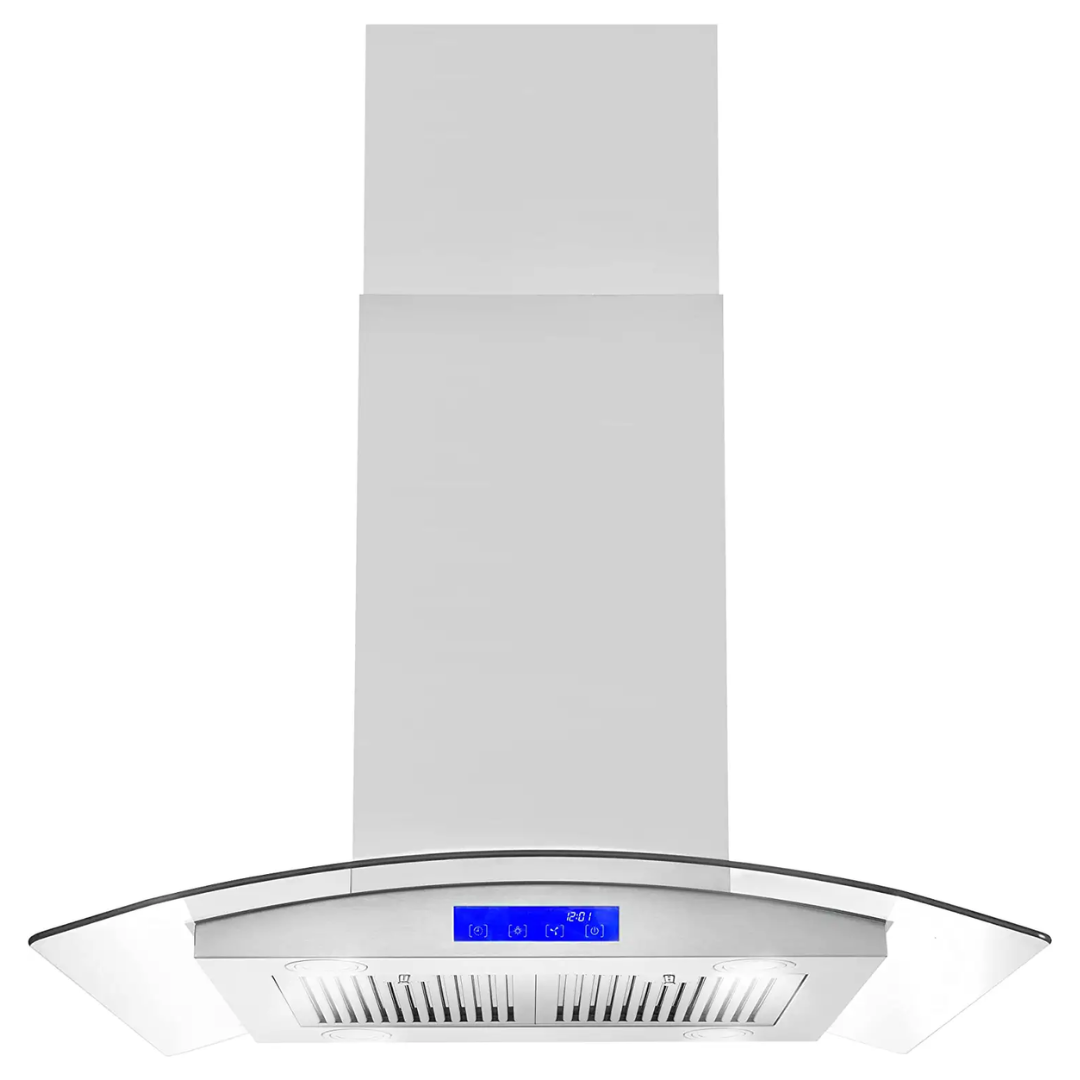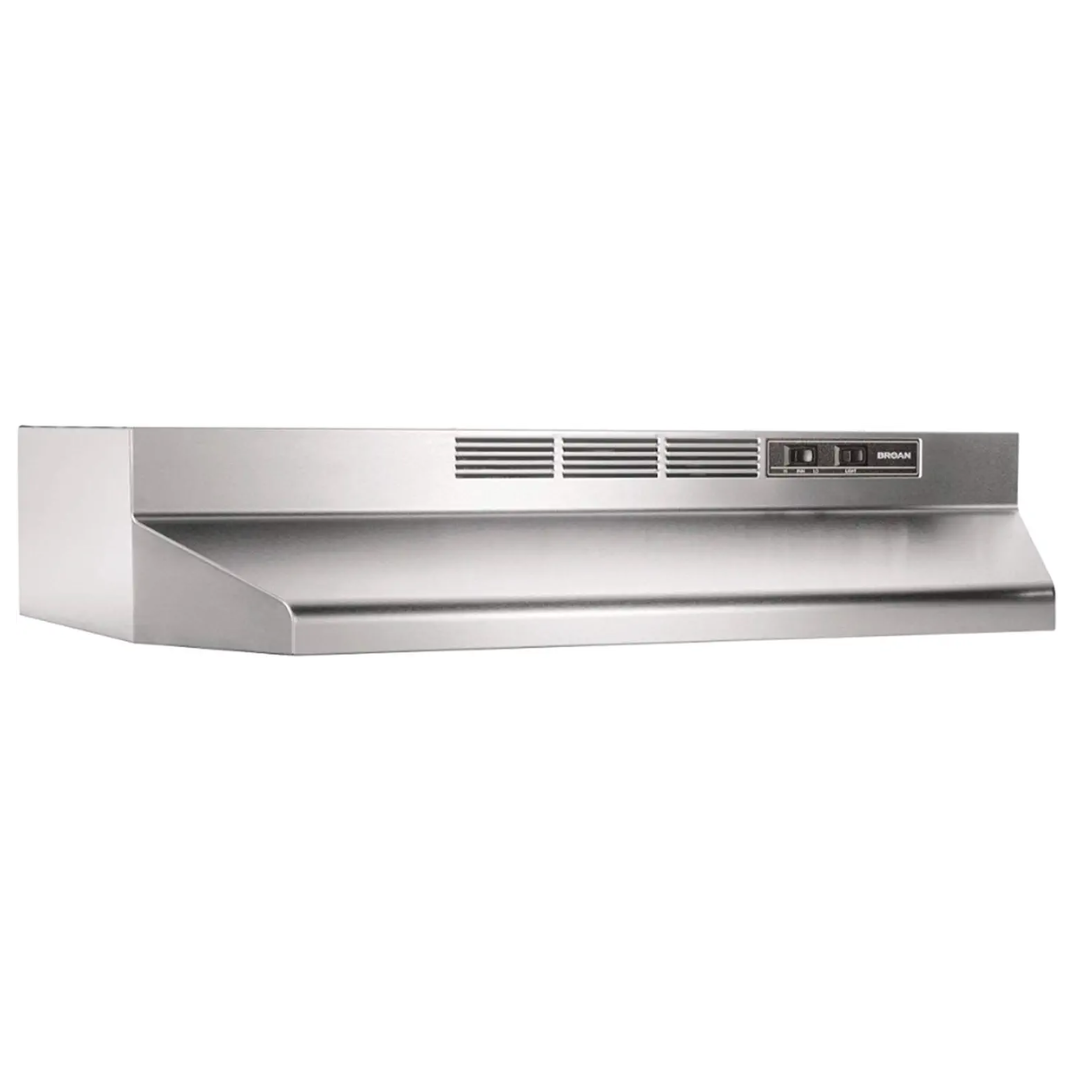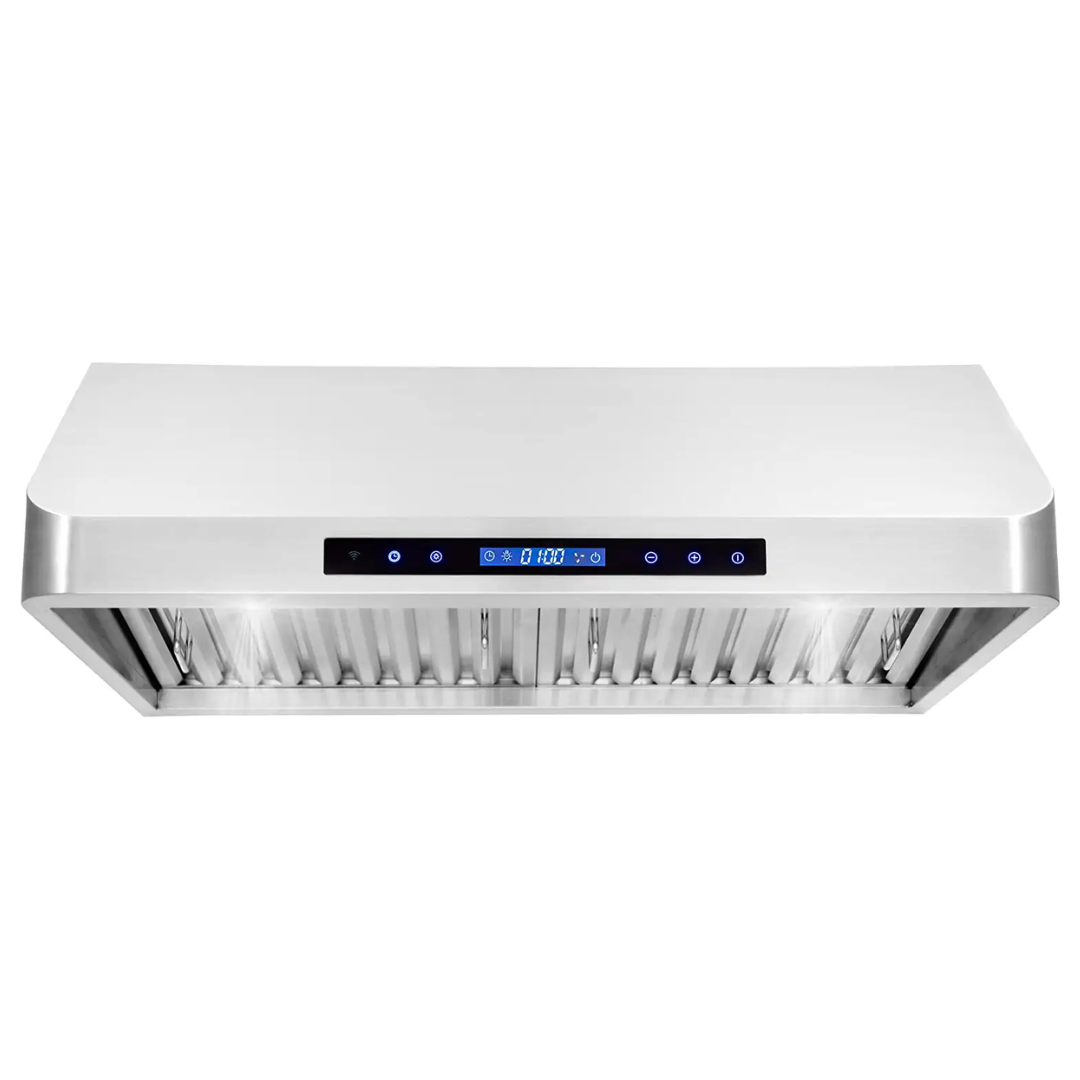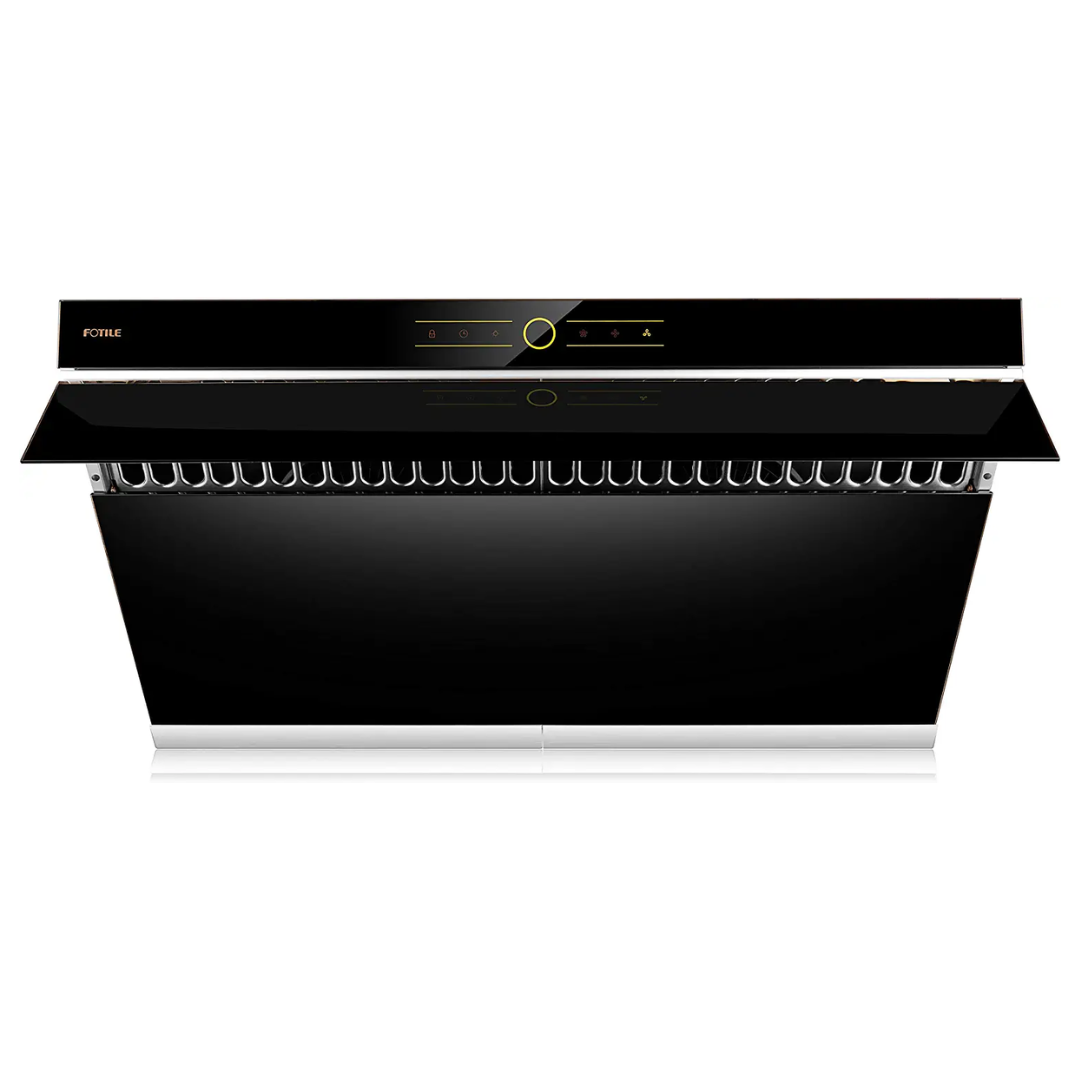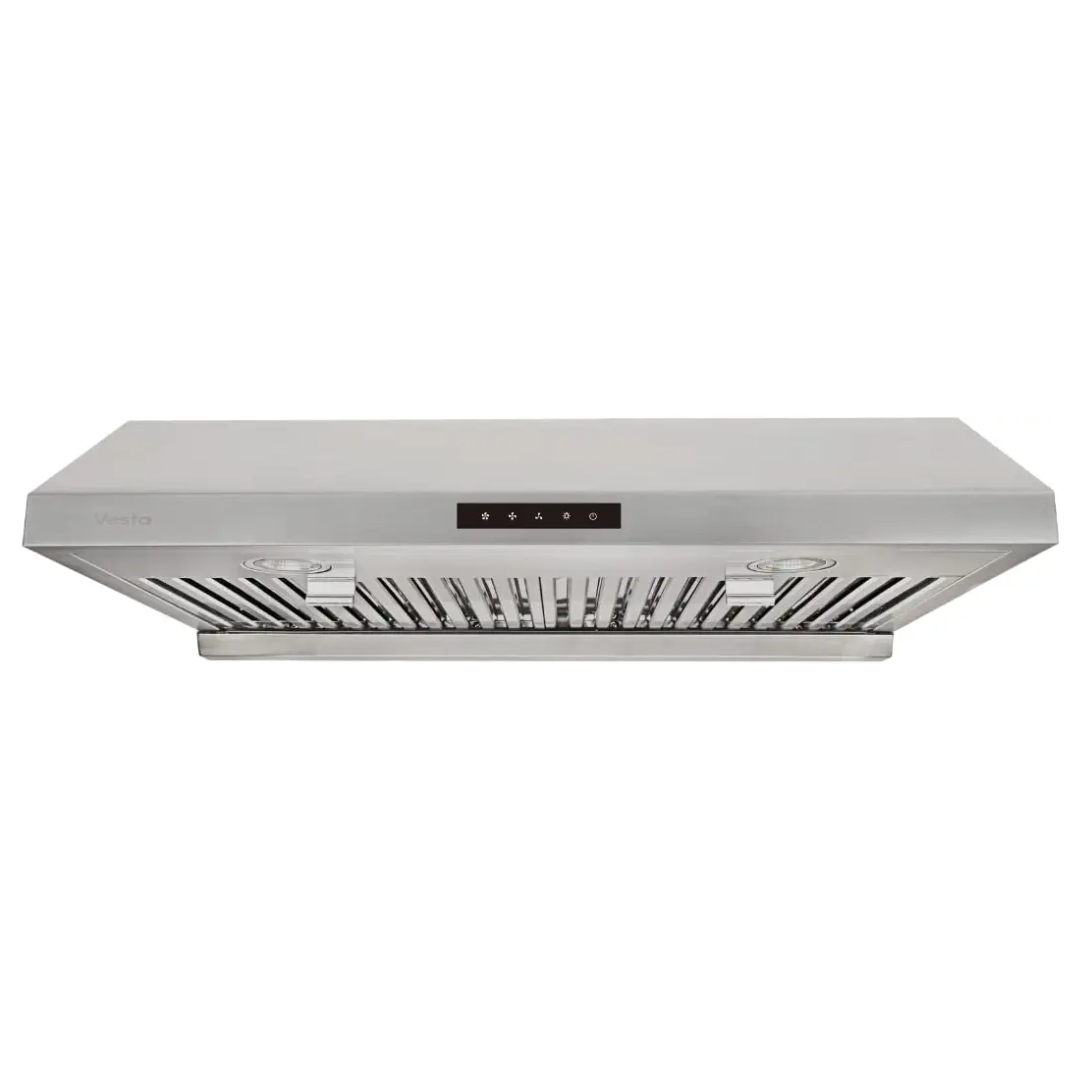In addition to whisking away unwanted odors, vent hoods remove moisture and grease from the air—as well as carbon monoxide, nitrogen dioxide, and other pollutants that cooking can release.
While range hoods are a practical necessity, you can choose from a wide variety of available looks. In this guide, we’ll identify some of the most popular types of range hoods and give you the information you need to pick out the best one for your home.
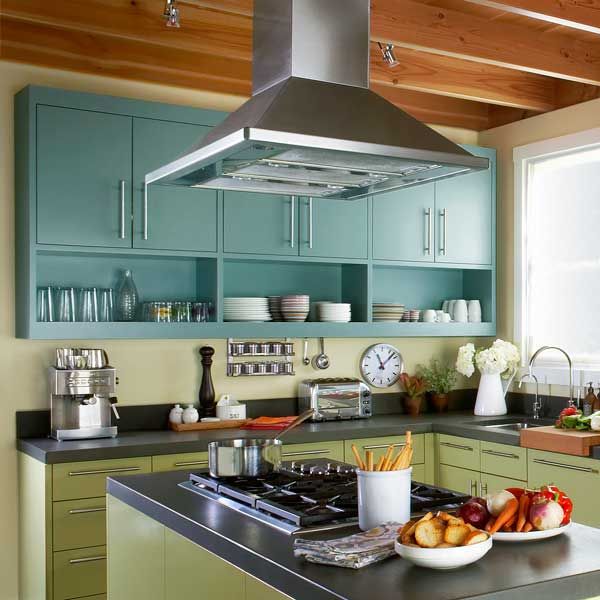
Why Do I Need a Vent Hood?
Airborne grease and other cooking by-products may simply sound like nuisances. However, cooking without proper ventilation is one cause of poor indoor air quality, which can negatively affect your health. That’s why the International Residential Code and the U.S. Environmental Protection Agency strongly advise homeowners to install a vent hood to capture, filter, and then expel cooking fumes outside through a vent in an exterior wall or on the roof.
As houses have become better insulated—and as high-BTU commercial-style ranges continue to rise in popularity—proper ventilation is increasingly important in order to maintain clean indoor air.
Choosing a Vent Hood: Important Questions To Ask
Picking the right hood requires you to take into account the power of your range and the way you use it. In addition, choosing a vent hood represents a huge style decision for your kitchen.
How Much Does It Cost?
Prices vary depending on size, functionality, and style. You can find a basic 30-inch hood for under $100, while a custom copper 60-inch ceiling-mount chimney-style hood can go for more than $20,000. Most mid-priced, high-style hoods can be purchased and installed for between $400 and $1,500.*
*Cost data in this article sourced from contractor estimates used by Angi.
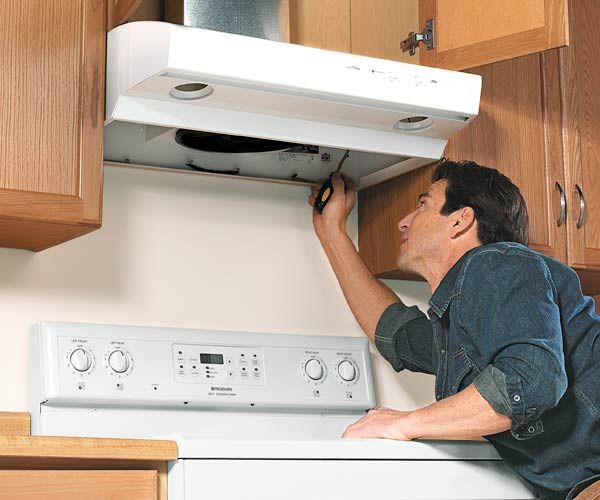
Should I DIY or Hire a Pro?
Swapping in a similar unit is a simple job that requires basic electrical work to connect the wiring. However, to install a new vent, you’ll need to cut holes in the walls, ceiling, or roof and run ductwork. This involves altering the structure of a home and is best left to a licensed HVAC contractor.
Where Can I Buy a Vent Hood?
You can order a variety of hoods online or find them at appliance retailers, showrooms, restaurant suppliers, and home centers.
What Are the Maintenance Requirements?
Experts recommend cleaning the filters after every 30 hours of use—typically every month or two—to keep a hood running smoothly.
Our Top Vent Hood Picks
Once you know the purpose of a vent hood, the typical budget, and how you’re going to install it, it’s time to pick a product. Here are our picks for the top vent hoods on the market.
Compare Top Vent Hoods
| Product | Material | Number of Fan Speeds | Interface Design | Airflow Rating |
|---|---|---|---|---|
| COSMO Island-Mount Range Hood | Stainless steel and tempered glass | Three | Touchscreen | 380 |
| Broan-NuTone Ductless Range Hood | Stainless steel | Two | Rocker switches | Not listed |
| COSMO Under-Cabinet Range Hood | Stainless steel | Four | Touchscreen | 500 |
| FOTILE Side-Draft Range Hood | Tempered glass | Three | Touchscreen | 530 |
| Vesta Under-Cabinet Range Hood | Stainless steel | Three | Touchscreen | 860 |
| Product | Material | Number of Fan Speeds | Interface Design | Airflow Rating |
Best For Island Cooktops
Pros and Cons
✔ Has a decorative look
✔ Uses dishwasher-safe filters
✔ Includes a digital display with power, fan, light, and time buttons
✘ Meant for only island cooktops
✘ Circulates 380 cubic feet of air per minute, which is fairly slow ventilation
What Customers Are Saying
Although this range hood was difficult for many customers to install, they appreciated the sleek aesthetic of the shiny stainless steel vent and curved tempered glass visor. While the fan was powerful, customers didn’t like how loud it was. Other users had complaints about the lack of responsiveness from the touch controls.
Best Entry-Level Hood
Pros and Cons
✔ Offers foolproof control switches
✔ Uses a permanently lubricated motor
✔ Offered at a competitive price
✘ Offers only two fan speeds
✘ Doesn’t comes with the bulb for the light
What Customers Are Saying
Many customers were pleased with the overall value of this range hood. They thought that, for the price, its features and performance either met or exceeded their expectations. While unhappy customers still enjoyed the look of this range hood, they were underwhelmed with its suction power.
Most Fan Speeds
Pros and Cons
✔ Has a backlit display with the time
✔ Can make it ductless with a kit
✔ Comes with a remote to control the fan and light
✘ Makes a lot of noise, as it operates at 65 decibels
✘ Requires a separate purchase to convert it
What Customers Are Saying
Many positive customer reviews highlighted this range hood’s quiet operation, strong performance, and ease of use. Satisfied customers appreciated the practicality of this range hood, but they also shared that it looked beautiful in their kitchen. Negative reviews mentioned that the lights weren’t bright enough. Other customers said the hood blew air around rather than sucking it in.
Best Draft Design
Pros and Cons
✔ Can lock the screen when you want to clean it without turning it on
✔ Has a delay function that keeps the fan on for two minutes after you’re done cooking
✔ Has a powerful dual-motor fan system
✘ Has a price tag that’s on the higher end for range hoods
✘ Installation can be tricky
What Customers Are Saying
Positively, customers liked the suction power, noise level, ease of maintenance, and smell removal of this range hood. Customers who cooked Asian dishes, including curry and pan-fried meat, thought that this range hood met their needs nicely. Negatively, some customers struggled with installation.
Best Ventilation
Pros and Cons
✔ Weighs less than 40 pounds, which is on the lighter side for range hoods
✔ Has a long and deep tray to capture the oil and grease that the filters don’t
✔ Has a six-inch round vent to fit most kitchen pipes
✘ Has small graphics on the touchscreen that may be difficult for some to read
✘ Has a short one-year warranty for most of the components
What Customers Are Saying
Overall, customers had positive feedback about this range hood, sharing that it filtered smells and dissipated fumes. Though the three fan settings were all fairly quiet, some users said that there wasn’t a discernible difference in their speed.
Vent Hood Parts
Below are the functional components of a range hood and how they work to vent air from above a stove.
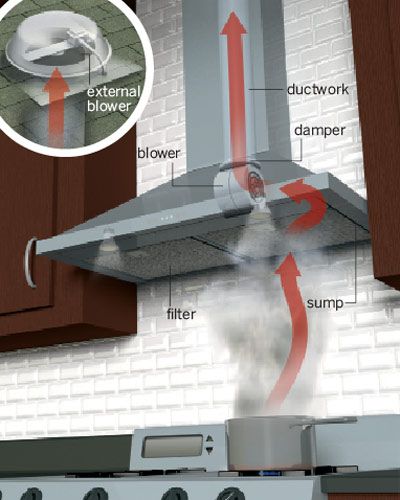
- Sump: Inverted area along the rim that collects fumes until the fan can exhaust them. Should be at least 1 inch deep.
- Filter: Traps grease before it can reach the blower and ductwork. Metal mesh filters are the most common type.
- Blower: Also called a fan, it moves air into the duct. Most blowers are in the hood, but they can be located “in-line,” up in the duct itself, or externally (inset), where the duct terminates.
- Ductwork: The metal channel that leads the air out to the exhaust vent.
- Damper: Prevents outside air from coming in when the fan is off.
Note: Vent hoods over 400 CFM (cubic feet per minute) require that makeup air be brought in from the outside when the unit is on. This air can come from a supply fan, a motorized damper, or another source.
Under The Vent Hood
You have plenty of options for vent hoods in terms of size, power, and style. Here’s how to narrow them down based on your needs.
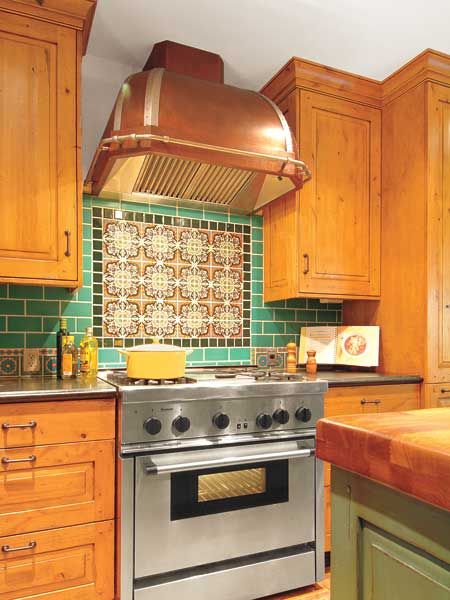
Ducted or Not?
As the EPA points out, venting polluted air out of your house is always preferable to recirculating it. Recirculating fans use charcoal filters to clean the air and release it back into the house when ducting to the outside is impossible, as it is in many apartment buildings. When it’s the only option, a recirculating hood is better than no ventilation at all, but this type should never be used with pro-style appliances.
Think about Power
The amount of air the blower moves, measured in cubic feet per minute (CFM), is one of the biggest factors to consider when choosing a hood. The larger and more powerful your burners are, the more CFM you need. (See “Calculator” section below.)
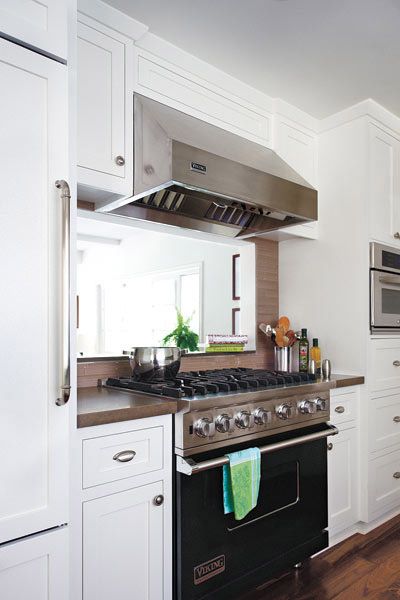
Measure It Right
A hood should be at least as wide as your cooking surface, but an extra 3 inches on each side can improve efficiency. The depth should cover the back burners and at least half of the front burners, though full coverage is best.
The height at which the hood hangs above your cooktop will also affect how well it works. A wall- or island-mount should be about 30 inches above the cooktop, while under-cabinet mounts, typically less powerful and with smaller ducts, should sit 24 inches above the range. If you want to place the hood higher than recommended, you’ll need a wider unit—extending 3 inches beyond both sides of the range—and more CFM to compensate. (See “Calculator” section below.)
Consider the Noise
To avoid a loud fan, check the sones (1 sone equals about 40 decibels). A fan set on low typically comes in under 1 sone, but high speeds can jump to 10 or more. For a quieter unit, look for one that’s 6 or fewer sones at 600 CFM.
Calculator: How Many CFM Do You Need?
An underpowered range hood won’t provide proper ventilation and an overpowered hood wastes energy, so make sure you calculate your kitchen’s needs correctly.
Range Hood Height, Surface Area Considerations, and More
As a general rule, look for 100 CFM for every linear foot of cooking surface. For pro-style ranges, the formula is 100 CFM for every 10,000 BTUs your appliance puts out. Other factors come into play as well. For every 3 inches a hood exceeds the suggested height above the cooktop, add 100 CFM.
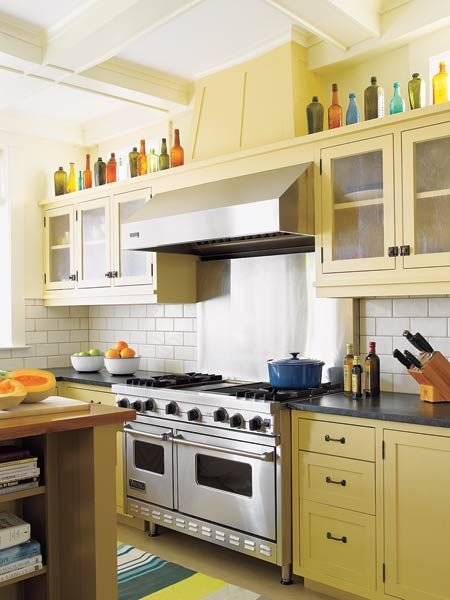
Island hoods require extra CFM to compensate for cross drafts, so calculate 150 CFM per linear foot for conventional cooktops and 200 CFM per 10,000 BTUs for professional-grade ranges.
Finally, consider how you cook. If you rarely grill or stir-fry at high heat, you may be able to go with a lower CFM than recommended.
Extra Kitchen Vent Hood Features That May (Or May Not) Be Worth It
A basic vent hood works well for casual cooks and those on stricter budgets. However, if you’d like a little more versatility from this appliance, many manufacturers offer the following options.
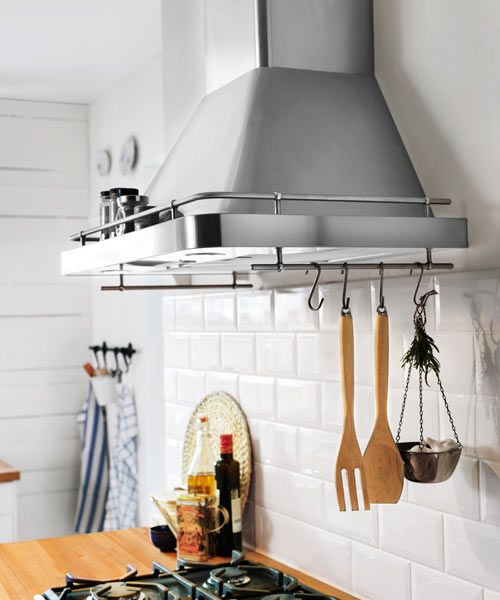
- Multiple fan speeds: You really need only high and low settings, but some manufacturers offer a wider range of speed options.
- Heat sensors: By sensing temperature changes, some units will turn on the fan automatically or adjust to the appropriate speed.
- Remote control: This can be useful for hard-to-reach island hoods or for times when you’re (briefly) away from the stove.
- Exhaust timers: After a certain period of time, typically 10 minutes, this feature shuts off the blower automatically—which is handy if you want to leave the fan running to take care of lingering odors.
- Built-in storage: Short on cabinet and counter space? Look for a hood with rails around the front and sides for hanging small pans and utensils. Certain designs also create a shallow shelf at the edge of the hood.
Range Hood Venting Options
Often, the type of vent hood will be determined by the placement of your existing range, ductwork, and cabinetry. If you’re considering a kitchen remodel, though, you might consider switching types for an improved kitchen layout.
Under-Cabinet
Under-cabinet range hoods takes up less visual space but cuts down on storage if the duct runs through the upper cabinet. Some hoods sit flush below cabinetry and slide out when needed. Vented combination microwave hoods can also save space, though they’re less powerful.
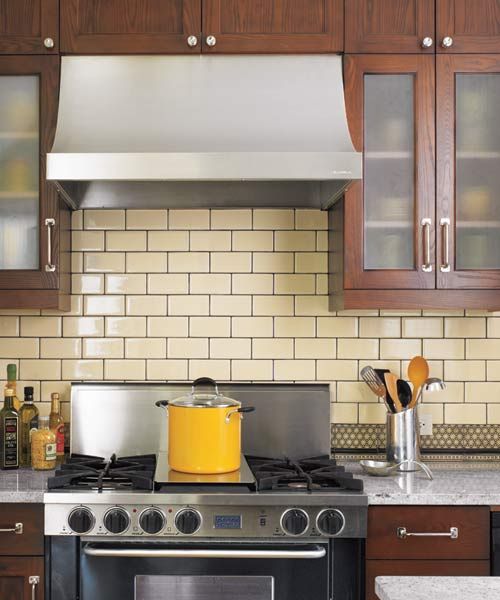
Wall-Mount
In terms of wall-mount range hoods, stainless steel units with exposed ductwork work well with the commercial kitchen look. However, there are options in a variety of shapes and materials to suit any style.

Ceiling-Mount Chimney
Usually hung above an island, a ceiling-mounted range hood can be pricey because it’s finished on all sides. Since these units tend to be more powerful, some with internal blowers can be very noisy.
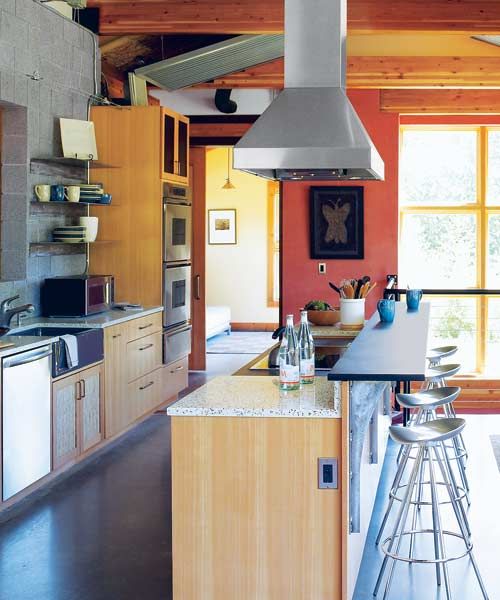
Downdraft
A slim downdraft vent retracts behind the cooktop into the cabinet below. This type tends to be less effective since it pulls rising smoke down, though some climb to 14 inches for better capture. These are not recommended for high-BTU cooktops.
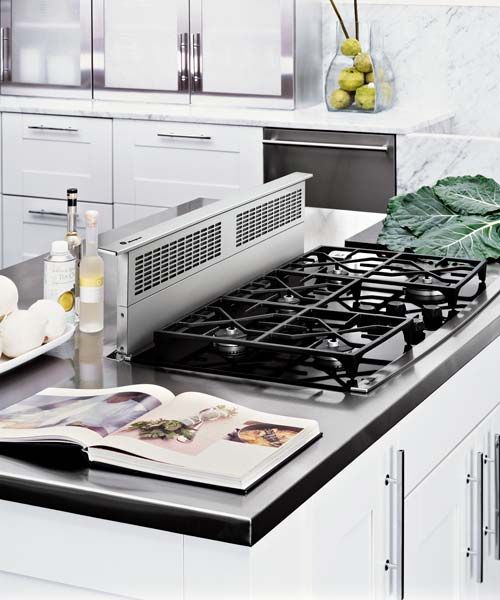
Perimetric
Perimeter vent hoods are a wall-hung type that pull in smoke through vents around the edges—instead of the center as with traditional hoods. This option is ideal for those who want more headroom, but it isn’t powerful enough to handle a 90,000-plus BTU range.
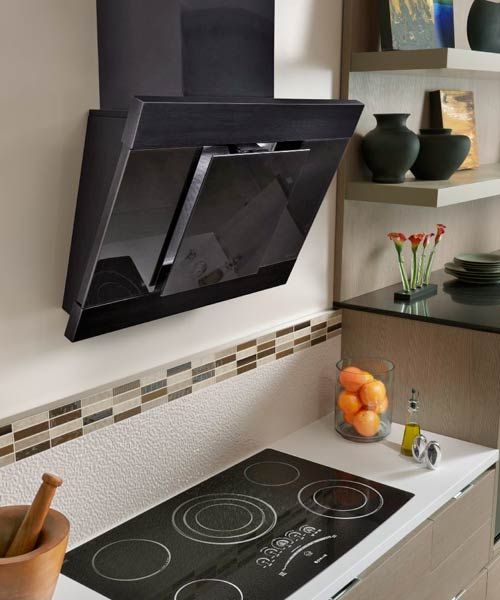
Vent Hood Insert
The guts of the hood—a power pack and a liner—can be hidden inside cabinetry or a custom-built hood with the vent hood insert option.
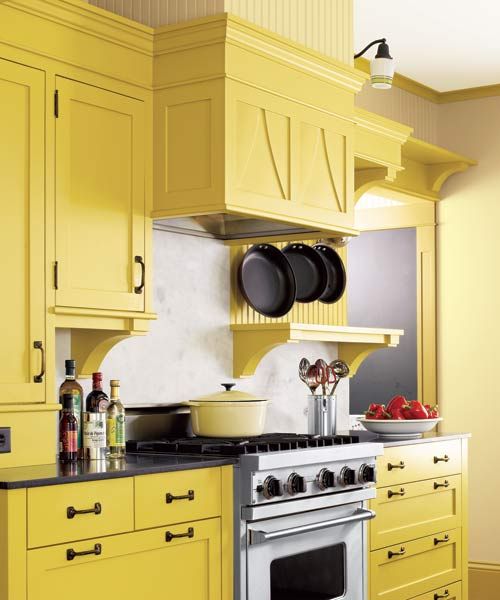
Vent Hood Ducts
If this is the first time your home will have an exterior-venting range hood, you’ll need to have ductwork installed. Additionally, if you install a more powerful range and hood, you may need to upgrade your ducts. Unless you’re a very experienced DIYer, ductwork should be installed by a licensed professional, but here’s what you need to know.
- Choose ducting that’s the same size as or slightly larger than the vent opening. The more powerful the hood, the larger the duct. For instance, a typical 400-CFM unit requires a 6-inch duct, while a 1,200-CFM model needs a 10- to 12-inch duct.
- For the best airflow, use smooth galvanized metal ducting rather than flexible or corrugated ducting. Seal joints with duct-joint mastic tape.
- Keep duct runs as straight and short as possible. Use gradual, 45-degree turns rather than 90-degree ones. The fewer the turns, the more efficient the system will be.
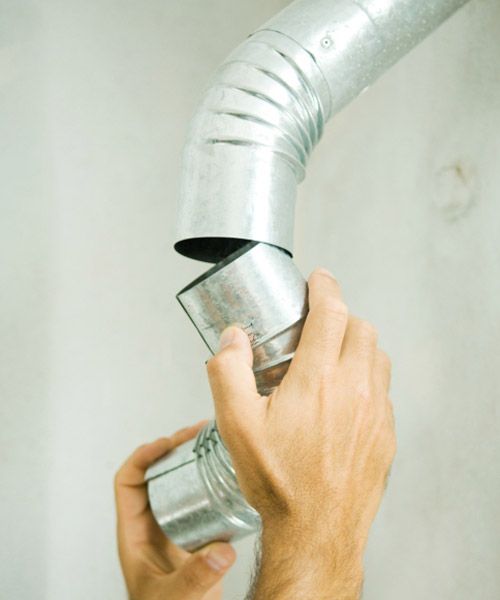
Noise Reduction Solutions
Worried that a powerful vent hood’s overly loud whir will make it impossible to carry on a conversation while you cook? Although most blowers are installed in the hood itself, they can also be placed in different locations to help reduce the noise. You just need to decide where you want it before you order the hood.
In-line blowers are located in the ductwork in the wall or between the ceiling joists. While the fan noise may be less noticeable, you might still hear the duct vibrating.
A better option is a remote or external blower, where the fan is placed on the roof or exterior wall with the exhaust vent. Placing the blower outside can also free up cabinet space.
Vent Hood Filter Options

The filter is one of the most important components of the vent hood, since it pulls grease and other pollutants out of the air. The type of filter will determine how it works and how you’ll clean it.
Metal Mesh
With a metal mesh option, the hood’s blower pulls smoke and vapors through several layers of aluminum or stainless-steel mesh, catching the grease. These removable filters should be cleaned regularly—most can be popped into the dishwasher—to prevent clogs that can slow airflow.
Baffles
More common on high-CFM, commercial-style units, baffles are slat-style metal filters that force the smoke to change direction several times. This causes grease droplets to separate from the air and drip down into a tray that can be taken out for cleaning.
Centrifugal Traps
In place of a filter, centrifugal traps use centrifugal force within the blower to liquefy grease. The grease is collected in a tray or a cup that’s removable for cleaning. With no filters to slow the airflow, these hoods require fewer CFM than those with baffles or mesh to do the same job, often with less noise.
Hood Vent Styles
The materials and design of the vent hood can help shape the look of your kitchen as a whole. Here are some design ideas to get you started.
Traditional Mantel
Building a custom wood mantel allows you to recess a hood insert above the stove, making it nearly invisible. The mantel can be as simple or as ornate as you want, either blending in with your cabinetry or becoming an eye-catching focal point. Below, the white-painted version with vertical planks subtly frames a showstopping cherry-red stove and creates a display shelf.
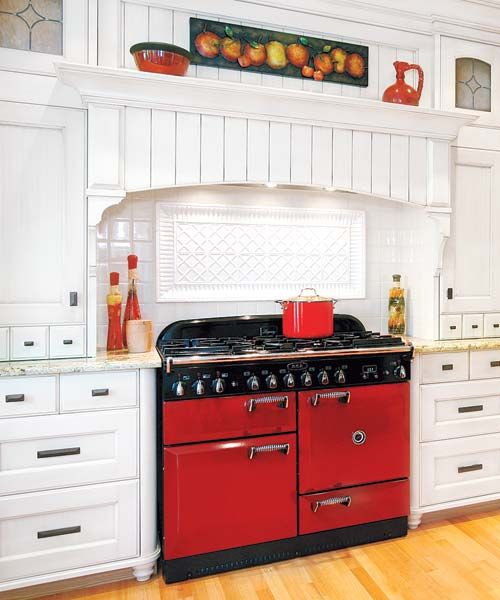
Similar to shown: Air-Pro unfinished 60-inch red oak detachable-front mantel hood, starting at $1,850, kitchensource.com
Luxe Metalwork
A swath of copper can warm up stainless appliances. Paired with distressed painted cabinets, the sculptural, bell-shaped hood in the photo below adds charm to the kitchen.
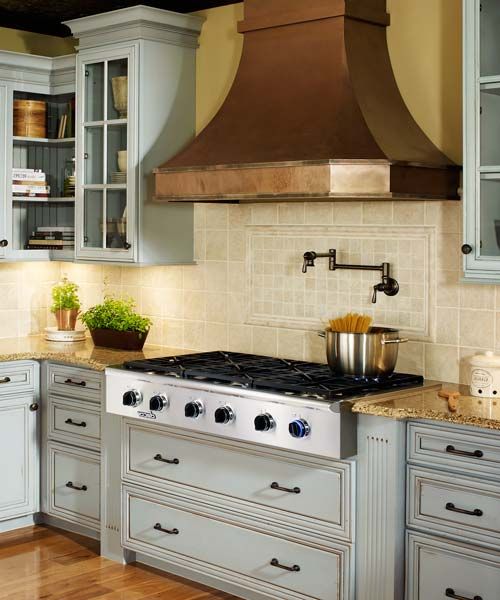
Similar to shown: RangeCraft Miami copper hood, about $8,500, rangecraft.com
Warm Modern Look
Another option for a totally seamless appearance is the have your cabinetmaker create a coordinating custom hood and fit it with an insert. Pairing the wood grain with a band of stone mosaic tile trim—running horizontally, not vertically as it does on the backsplash—gives the kitchen pictured below a sleek, earthy appeal.

Shown: Wolf Pro Hood Liner, starting at about $1,505, subzero-wolf.com for showrooms
Cottage Character
A matching hood tops off this vintage stove. With a white finish and chrome straps and accents, it works perfectly with the circa-1930s Magic Chef range.
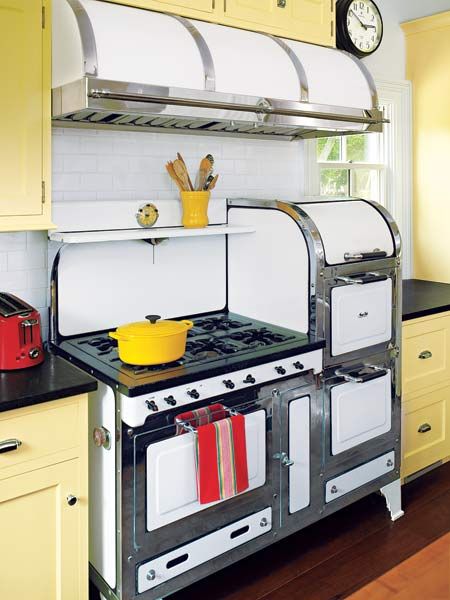
Shown: Modern-Aire customized PS-26 hood, starting at about $2,740, modernaire.com
Our Conclusion
Vent hoods, also called range hoods, play an important role in maintaining your home’s indoor air quality. They can also add to the design of your kitchen, either blending in or acting as a focal point based on your style preferences. Make sure you choose the proper size and type based on your stove, and also consider factors like filter type, ductwork, and extra features. A good vent hood should last at least as long as an electric stove—around 15 years—so balance budget and quality when making your purchase.
